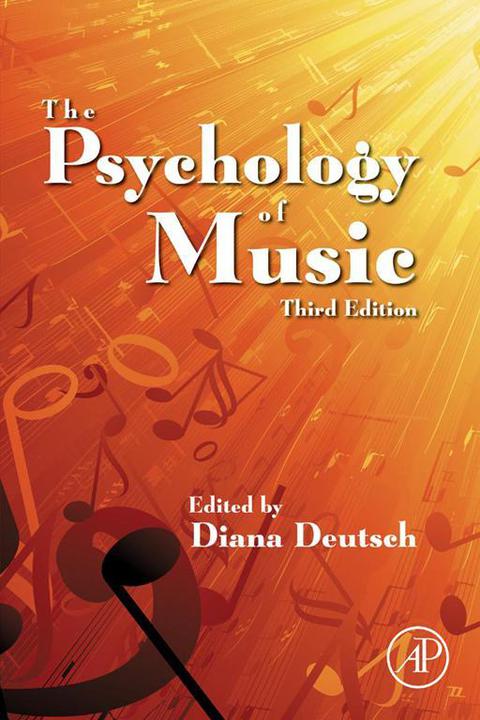Description
Efnisyfirlit
- Cover image
- Title page
- Table of Contents
- Copyright
- List of Contributors
- Preface
- 1. The Perception of Musical Tones
- I Introduction
- II Perception of Single Tones
- III Perception of Sound Combinations
- IV Conclusions and Outlook
- Acknowledgments
- References
- 2. Musical Timbre Perception
- I Psychophysics of Timbre
- II Timbre as a Vehicle for Source Identity
- III Timbre as a Structuring Force in Music Perception
- IV Concluding Remarks
- Acknowledgments
- References
- 3. Perception of Singing
- I Introduction
- II Voice Function
- III Phonation
- IV Resonance
- V Intensity and Masking
- VI Aspects of Voice Timbre
- VII Vibrato
- VIII Intonation in Practice
- IX Expression
- X Concluding Remarks
- References
- 4. Intervals and Scales
- I Introduction
- II Pitch Intervals
- III Scales and Tuning Systems
- IV Overview
- Acknowledgments
- References
- 5. Absolute Pitch
- I Introduction
- II Implicit AP
- III Genesis of AP
- IV AP and Speech Processing
- V AP and Pitch Processing
- VI Neuroanatomical Substrates of AP
- VII AP Accuracy and Stimulus Characteristics
- VIII Pitch Shifts in AP Possessors
- IX AP in Special Populations
- X Conclusion
- Acknowledgments
- References
- 6. Grouping Mechanisms in Music
- I Introduction
- II Fusion and Separation of Spectral Components
- III Larger-Scale Groupings
- IV Auditory Streaming and Implied Polyphony
- V Grouping and Phrase Structure
- VI Grouping of Simultaneous Tone Sequences
- VII Grouping of Equal-Interval Tone Complexes
- VIII Relationships to Music Theory and Practice
- Acknowledgments
- References
- 7. The Processing of Pitch Combinations
- I Introduction
- II Feature Abstraction
- III Abstraction of Higher-Order Shapes
- IV The Organization of Short-Term Memory for Tones
- V Paradoxes Based on Pitch Class
- VI Illusory Transformation from Speech to Song
- VII Conclusion
- Acknowledgments
- References
- 8. Computational Models of Music Cognition
- I Introduction
- II Models of Key-Finding
- III Models of Meter-Finding
- IV Other Aspects of Perception
- V Models of Musical Experience
- VI Models of Performance
- VII Models of Composition
- VIII Conclusions
- Acknowledgment
- References
- 9. Structure and Interpretation of Rhythm in Music
- I Introduction
- II Overview: Decomposing the Rhythmic Signal
- III Structure and Interpretation: Visualizing Rhythm Space
- IV Rhythmic Pattern: Representation
- V Rhythmic Pattern and Timing: Categorization
- VI Metrical Structure
- VII Tempo and Timing: Perceptual Invariance
- VIII Rhythm and Movement: Embodied Cognition
- Acknowledgments
- References
- 10. Music Performance: Movement and Coordination
- I Introduction
- II Movement in Performance
- III Ensemble Performance
- IV Summary
- Acknowledgments
- References
- 11. Musical Development
- I Origins of Music
- II Musical Development in a Social Context
- III Musical Enculturation and Critical Periods for Musical Acquisition
- IV Music Production: Development of Singing
- V Effects of Formal Music Training on Musical Development
- VI Interactions between Music Experience and Nonmusical Abilities
- VII General Conclusions
- Acknowledgments
- References
- 12. Music and Cognitive Abilities
- I Introduction
- II Music Aptitude and Cognitive Abilities
- III Cognitive Abilities after Listening to Music
- IV Background Music and Cognitive Abilities
- V Music Training and Cognitive Abilities
- VI Conclusions
- Acknowledgments
- References
- 13. The Biological Foundations of Music: Insights from Congenital Amusia
- I Congenital Amusia
- II Pitch Is Special
- III Right Frontotemporal Connectivity Is Key
- IV Music Genes
- V Limited Plasticity
- VI Conclusions
- Acknowledgments
- References
- 14. Brain Plasticity Induced by Musical Training
- I Introduction
- II Behavioral Studies: The Effects of Musical Training on Cognitive Performance
- III Imaging Studies: The Effects of Musical Training on Brain Organization
- IV Auditory-Motor Interactions Underlie Music and Language Learning
- V Music-based Treatments to Modulate Brain Plasticity: Melodic Intonation Therapy and Auditory-Motor Mapping Training
- VI Concluding Remarks
- Acknowledgments
- References
- 15. Music and Emotion
- I History
- II Emotion Theory
- III Perception of Emotion
- IV Arousal of Emotion
- V Themes in Current Research
- VI Implications and Outlook
- References
- 16. Comparative Music Cognition: Cross-Species and Cross-Cultural Studies
- I Introduction
- II Cross-Species Studies
- III Cross-Cultural Studies
- IV Conclusion
- Acknowledgments
- References
- 17. Psychologists and Musicians: Then and Now
- I Helmholtz and Basevi in the 1860s
- II Seashore and Kurth in the 1920s
- III Francès and Meyer in the 1950s
- IV Psychologists and Musicians Today
- V A Continuing Challenge
- References
- Author Index
- Subject Index






Reviews
There are no reviews yet.